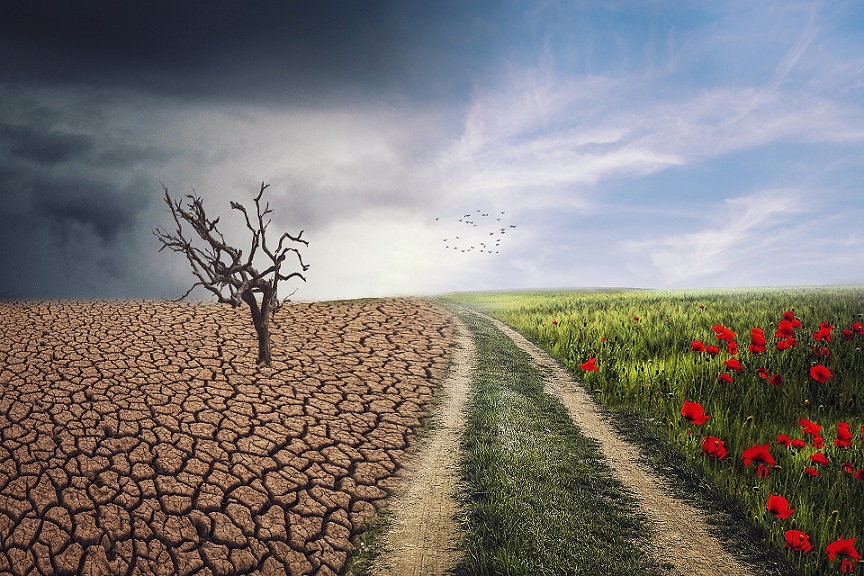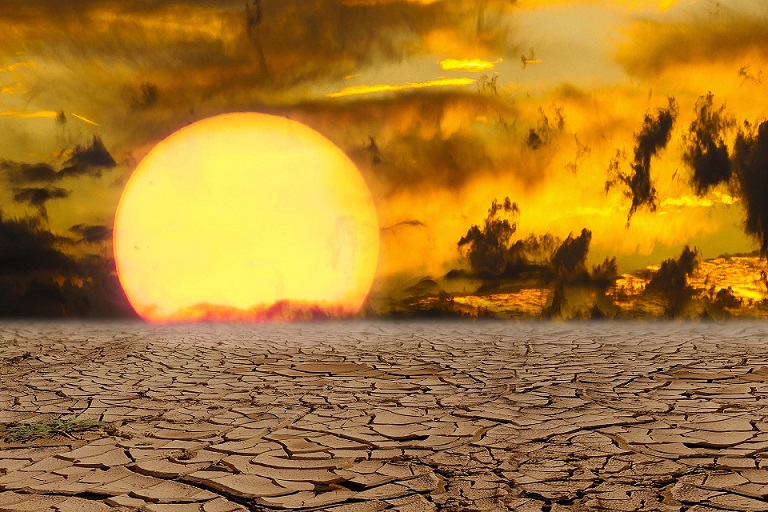Cataclysms affect the population as a whole but are particularly harsh on workers, commonly the people most exposed to the rigours of the climate for long periods of more intense temperatures. Global warming could, by about 2050, cause losses equivalent to 19% of global income.
 Sergio Ferrarto
Sergio Ferrarto
A new report by the International Labour Organisation (ILO), entitled “Ensuring safety and health at work in a changing climate”, states that climate change is having disastrous effects on the health of 70% of these people worldwide, such as skin lesions, cancer, cardiovascular diseases, respiratory conditions, macular degeneration and mental health issues.
The report, published in the third week of April, includes irrefutable evidence of six principal effects of climate change on safety and health at work. These effects, many of which are not new, were selected for their seriousness and the scale of their impact: excessive heat, ultraviolet radiation, extreme weather phenomena, air pollution, vector-borne diseases (transmitted by mosquitoes, for example) and changes in the use of agrochemical products.
Excessive heat is one of the most harmful and widespread effects. According to the ILO, it is suffered by at least 2,410 million workers, especially in agriculture, natural resource management, construction, waste collection, transport, tourism and sport.
High temperatures can cause sunstroke, exhaustion, rhabdomyolysis, fainting, cramp, rashes, cardiovascular disease and chronic and acute renal lesions. The report records over 22 million lesions and almost 19,000 deaths per year in the work environment due to extreme heat.
 The planet continues to burn with an ever-higher human cost. Seven out of ten workers are suffering as a consequence of this warming.
The planet continues to burn with an ever-higher human cost. Seven out of ten workers are suffering as a consequence of this warming.
Furthermore, some 1,600 million workers are exposed to ultraviolet radiation every year with serious consequences such as sun burn, blisters, acute ocular lesions, weakening of the immune system, cataracts, skin cancer and macular degeneration, among others. Non-melanoma skin cancer alone, related to different types of work, kills thousands of people every year. With regard to the impact of extreme meteorological and hydrological phenomena, the ILO calculates that over two million people have died in the last fifty years, especially medical and paramedical workers, firefighters and other emergency service workers, as well as people working in the agricultural and fishing sectors.
A further 850,000 workers die annually due to air pollution, victims of serious illnesses like cancer (lung cancer, particularly) and cardiovascular and respiratory illnesses.
At least 873 million people who labour in the agricultural sector face a greater risk of exposure to agrochemical products, with the correlation of a wide range of diagnoses of poisoning, cancer, neurotoxicity, endocrine disruption, reproductive disorders, chronic obstructive cardiovascular and pulmonary diseases and immunosuppression. In addition, over 300,000 deaths every year are due to poisoning from pesticides.
 In the same sector, but specifically with regard to occupations such as construction and firefighting, every year there are over 15,000 deaths caused by parasitic and vector-borne diseases such as leishmaniasis, Chagas disease, African trypanosomiasis, malaria, dengue fever and bilharzia.
In the same sector, but specifically with regard to occupations such as construction and firefighting, every year there are over 15,000 deaths caused by parasitic and vector-borne diseases such as leishmaniasis, Chagas disease, African trypanosomiasis, malaria, dengue fever and bilharzia.
Alarming data
Due to climate change, even if CO2 emissions decreased drastically from today, by around 2050 the global economy could lose 19% of its potential income. That is the calculation made by a group of experts from the Potsdam Institute for Climate Impact Research published in the “Nature” journal in the third week of April.
Citing empirical data collected in more than 1,600 regions of the world over the last 40 years, these experts argue that this loss could be six times greater than the expense necessary to limit global warming to two degrees centigrade.
The pace of warming in Asia exceeded the global average in 2023, doubling in a short space of time the upward trend between 1961 and 1990. According to EM-DAT, the International Disaster Database, last year Asia experienced 79 hydrometeorological disasters. Of those, over 80% were caused by storms or floods that directly affected more than nine million people.
 In another regional report also from the end of April, the World Meteorological Organisation describes the increasingly worrying impact of climate in Europe where, due to extreme temperatures, mortality has increased by around 30% in the last two decades.
In another regional report also from the end of April, the World Meteorological Organisation describes the increasingly worrying impact of climate in Europe where, due to extreme temperatures, mortality has increased by around 30% in the last two decades.
2023 was one of the hottest years since records began: temperatures were above average for eleven months. It was also the year with most days of “extreme thermal stress”, in other words, significant alterations to the human organism caused by extreme temperatures due to heat or cold. Furthermore, more than two in every three workers face serious health consequences daily due to climate change’s effect on their working activity. According to the ILO, it is probable that these global figures will do nothing but worsen.
Some sectors of the labour force, including agricultural workers and those who carry out heavy work in the open air in hot climates, are particularly vulnerable to the effects of global warming. In both cases, it is necessary to think of additional protective measures. PL
(Translated by Philip Walker – Email: philipwalkertranslation@gmail.com) – Photos: Pixabay












.jpg)












